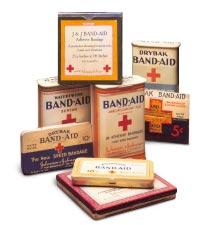Saturday, October 22, 2005
Here's where some of my blog's current visitors are from. (Thanks to Harold Jarche for turning me on to Blogflux.) It's a small world after all.
George Siemens has posted a great presentation of his concept of connectivism. Couple this with Stephen Downes' article on eLearning 2.0 and my take on informal learning. The three of us come at the topic from different directions but end up in nearly the same place. We're trying to schedule an on-line conversation to explore our intersections.
I listened to George's presentation this morning. We share a concern that old notions of learning and knowledge try to put boundaries around learning. George points to the use of frameworks; I despair of limiting potential through closed design. George opens the boundaries by redefining learning as creating connections. I define learning as adaptation to change. We both say "the knowledge is out there," not just in a learner's head.
Stephen calls for eLearning 2.0 that parallels Web 2.0. By all means. A minor quibble: if internet no longer starts with a capital i, it's time to forget the e of eLearning.
Borrowing from both Tom Friedman and Tom Malone, I think the world of learning is becoming flat. Networks evolve from top-down to peer-to-peer. Government evolves from kingdoms to democracies. Corporations go from command and control to commercial ecosystems. The teacher-student model morphs into colleagues with shared interests. Individuals are becoming their own instructional designers and knowledge navigators.
Yesterday Microsoft's Bob Mosher and I took turns addressing the informal learning part of this equation at eLearning Forum. My main ah-ha came from small group discussions after the fact. One individual talked about how her company had dismantled its training department. (Business units could contract for their own compliance training and so forth.) Others discussed how to add informal learning to the overall mix of training activities. Nick Negroponte's observation showed up on my internal billboard: "Incrementalism is the worst enemy of innovation." I think wholesale change is in order and fear that grafting pieces of informal learning into the existing structure is like putting a bandaid on a sucking chest wound.
George Siemens has posted a great presentation of his concept of connectivism. Couple this with Stephen Downes' article on eLearning 2.0 and my take on informal learning. The three of us come at the topic from different directions but end up in nearly the same place. We're trying to schedule an on-line conversation to explore our intersections.
I listened to George's presentation this morning. We share a concern that old notions of learning and knowledge try to put boundaries around learning. George points to the use of frameworks; I despair of limiting potential through closed design. George opens the boundaries by redefining learning as creating connections. I define learning as adaptation to change. We both say "the knowledge is out there," not just in a learner's head.
Stephen calls for eLearning 2.0 that parallels Web 2.0. By all means. A minor quibble: if internet no longer starts with a capital i, it's time to forget the e of eLearning.
Borrowing from both Tom Friedman and Tom Malone, I think the world of learning is becoming flat. Networks evolve from top-down to peer-to-peer. Government evolves from kingdoms to democracies. Corporations go from command and control to commercial ecosystems. The teacher-student model morphs into colleagues with shared interests. Individuals are becoming their own instructional designers and knowledge navigators.
Yesterday Microsoft's Bob Mosher and I took turns addressing the informal learning part of this equation at eLearning Forum. My main ah-ha came from small group discussions after the fact. One individual talked about how her company had dismantled its training department. (Business units could contract for their own compliance training and so forth.) Others discussed how to add informal learning to the overall mix of training activities. Nick Negroponte's observation showed up on my internal billboard: "Incrementalism is the worst enemy of innovation." I think wholesale change is in order and fear that grafting pieces of informal learning into the existing structure is like putting a bandaid on a sucking chest wound.











5 Comments:
Hi Jay,
I'm curious if you've looked into the use of chatrooms such as IRC and if they have any useful role in eLearning or training in corporate environments?
Marc, I'll take a look at ClustrMaps. Thanks.
Sarita, I have not looked into chatrooms such as IRC as learning environments. I'd guessed that corporations and government are too concerned about confidentiality to be that open. Maybe I'm wrong. Do you know of any examples?
No, I don't know of any examples.
I know a number of conferences in recent years have tested the use of backchannel chat rooms while presenters are speaking in the front.
I am writing a paper about IRC in the classroom. In my program, a backchannel has been in use over the past year both in the classroom and outside of it (interesting cross between social and academic backchannel use - since the professor isn't endorsing it, it is definitely an informal learning environment).
Over the past year, there have been 166,000+ user entries. Needless to say, lots of data to analyze and I was looking for similar studies.
Sarita, that rings a bell. I'm usually focused on corporate, so I wasn't thinking classroom.
There's a prof at Darden School of Business at U.Va. who experimented with the effect of onging chat that was projected on a screen in the front of the room for all to see. Initial results were promising.
Conor Vibert at Acadia University has been using chat in his business classes for at least five years. Here's a post I made on it, complete with links to Conor's co-ordinates: http://www.jarche.com/node/41
Post a Comment
<< Home